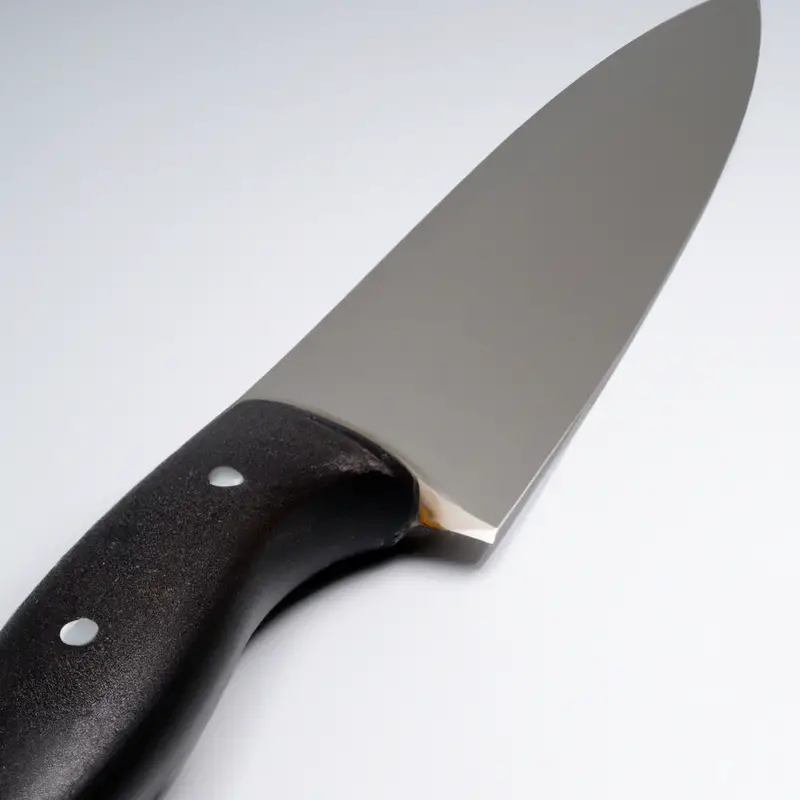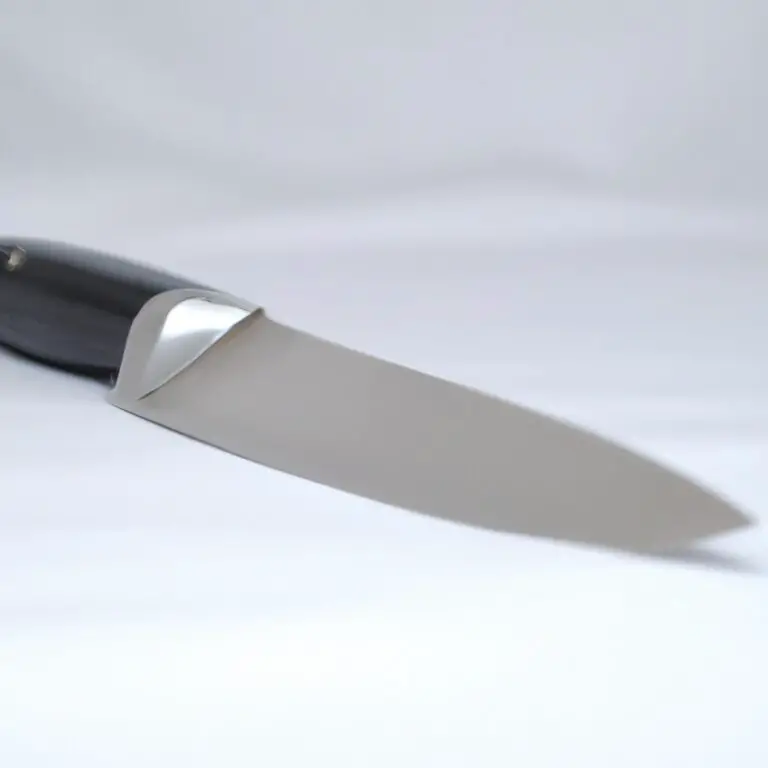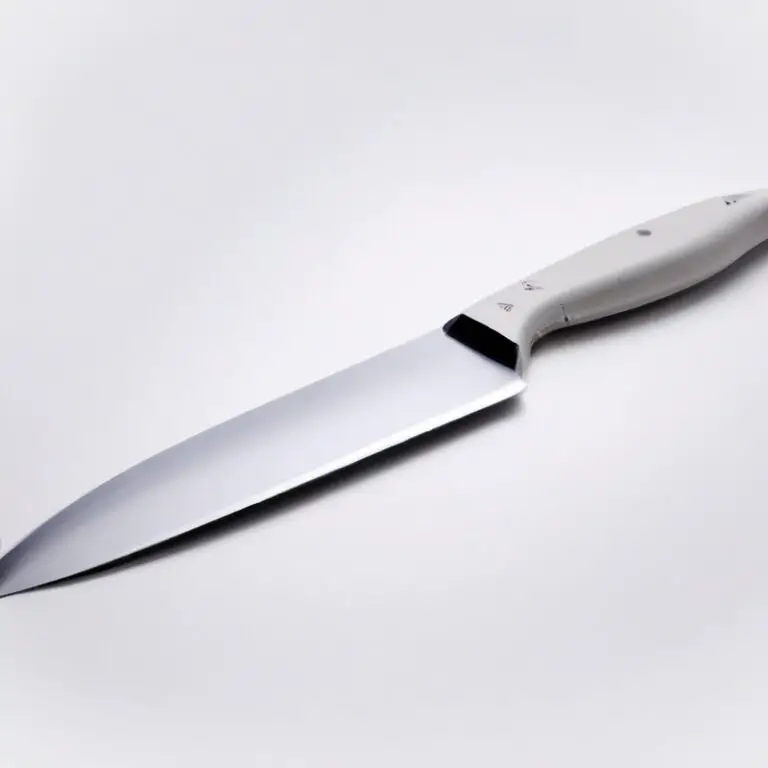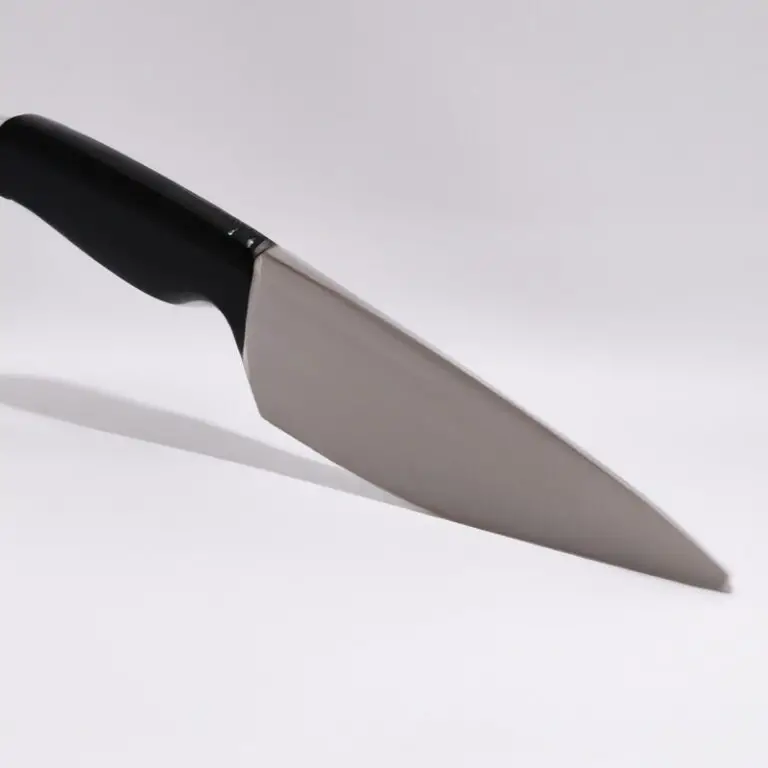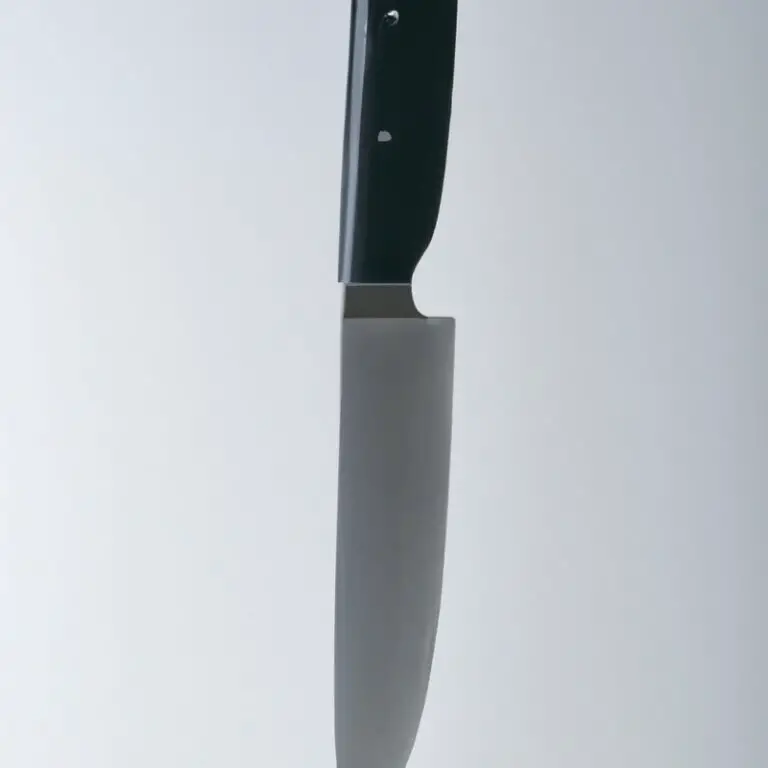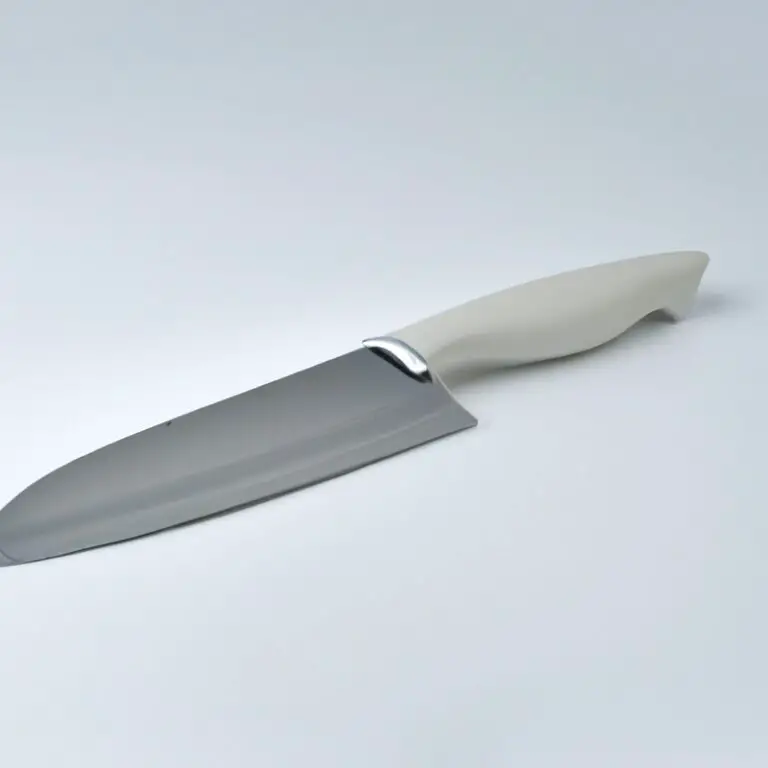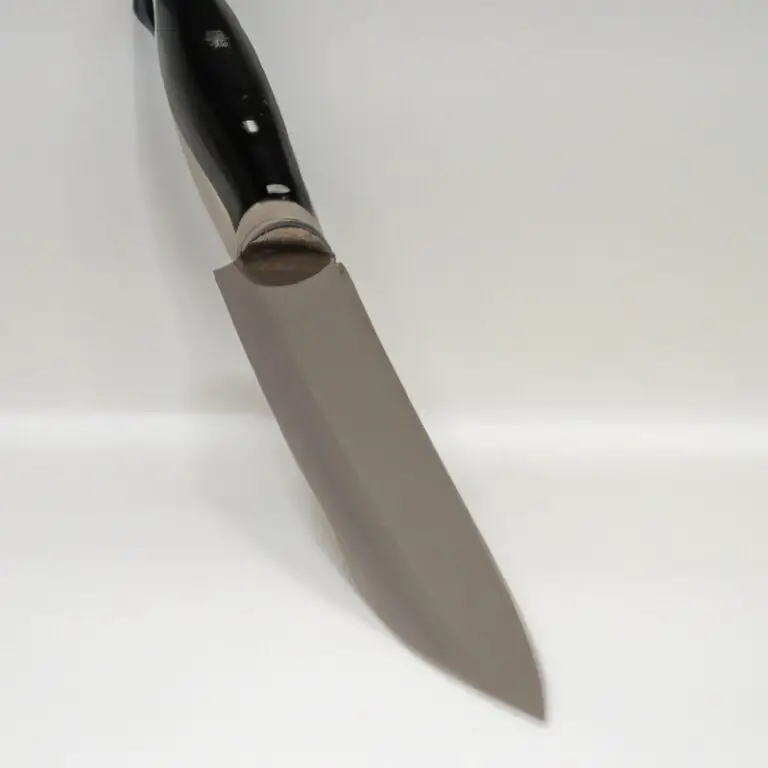What Is The Ideal Balance Point For a Chef Knife? Discover Now!
Key Takeaways:
- The ideal balance point for a chef knife is where the blade and handle are evenly balanced for efficient and safe use.
- A balanced chef knife enhances control and reduces fatigue, improving the overall experience during food preparation.
- Achieving the perfect balance point is a matter of personal preference, but most chefs prefer a slight forward balance for increased precision.
- A well-balanced chef knife is a crucial tool for both professional chefs and home cooks, ensuring optimal performance and reducing the risk of injury.
Have you ever wondered why some chef knives feel perfect in your hand while others feel awkward and uncomfortable? The secret lies in the knife’s balance point.
Understanding the importance of finding the ideal balance for a chef knife can make a significant difference in the quality of your cooking experience.
In this article, we’ll delve into the science behind achieving the perfect balance point for a chef knife, the various techniques used to achieve it, and the impact of handle design, weight distribution, blade length, and personal preference on the final result. Get ready to slice and dice with confidence!
| Balance Point | Pros | Cons |
|---|---|---|
| Handle-Heavy | Comfortable Grip: Easier to control the knife and execute precise cuts. | Poor Chopping: Not ideal for chopping through tough ingredients. |
| Blade-Heavy | Better Chopping: The weight of the blade helps to chop through tougher ingredients with ease. | Hand Fatigue: More difficult to control and can lead to hand fatigue over extended use. |
| Perfectly Balanced | Optimal Control: The perfect balance point allows for optimal control, precision, and effortless handling. | Expensive: A perfectly balanced knife can come with a high price tag, making it less accessible for many home cooks. |
Understanding the importance of balance in a chef knife
Balance is a crucial factor in a good chef knife as it affects both the comfort and efficiency of using it. Balance refers to the point where the blade meets the handle that evenly distributes the weight of the knife.
A well-balanced chef knife helps reduce strain on the wrist and allows the chef to use the knife for an extended period without fatigue.
The balance point also helps in the precision of cuts and makes the maneuver of the blade more effortless. Finding the ideal balance point is a delicate balance between the handle and the blade and can vary from one chef to another, depending on their personal preferences.
The science behind finding the perfect balance point for a chef knife
To find the perfect balance point for a chef knife, science comes into play. The balance point of a knife refers to the spot where the weight of the blade equalizes with the weight of the handle.
When a chef knife is correctly balanced, the user can wield it comfortably while minimizing the strain on their hand and wrist.
Several variables go into determining a knife’s balance point, including the weight distribution and handle design. Traditional methods of balancing include trial and error, while modern techniques such as computer modeling provide a more objective approach.
Experts also recommend balancing the knife for different cutting techniques as different movements require diverse balance points.
The length of the blade is another factor that can influence the balance point. Longer blades tend to have a higher balance point than shorter ones.
Furthermore, balancing the knife is a personal choice, as what works best for one user might not work for another.
The ideal balance point is a subjective factor depending on the individual’s comfort and usage.
Factors that affect the balance point of a chef knife
Factors that affect the balance point of a chef knife include the weight of the blade, the shape of the blade, the size and shape of the handle, and the type of material used to construct the handle. The placement of the balance point plays a crucial role in the overall performance of a chef’s knife.
A knife that is front-heavy will require more effort to control, while a knife that is back-heavy will be harder to maneuver and control precisely.
Additionally, the balance point of a chef’s knife is influenced by the user’s own grip strength, technique, and personal preference. Ultimately, finding the right balance point for a chef’s knife depends on a variety of factors and will vary from person to person.
Traditional methods of balancing a chef knife
Traditional methods of balancing a chef knife involve using experience and intuition to find the ideal balance point. One common technique is the finger test, where the chef places their index finger on the blade and balances the knife.
If the knife tilts towards the handle, it is handle-heavy, and if it tilts towards the blade, it is blade-heavy.
The chef then adjusts by adding or removing weight from the handle or blade until the knife balances perfectly. Another traditional method involves balancing the knife on a chopstick or the spine of another knife to determine the center of gravity.
This method requires a steady hand and careful observation to find the ideal balance point.
While these traditional methods may not provide exact measurements, they have been relied upon for generations by skilled chefs and are still used today in many kitchens around the world.
Modern techniques for determining the ideal balance point of a chef knife
Modern techniques for determining the ideal balance point of a chef knife include using specialized software and equipment for measuring weight distribution. These tools allow chefs and knife manufacturers to test and adjust various elements, such as the blade length, handle shape, and weight distribution, to find the perfect balance point for a particular knife model.
Additionally, companies can simulate the effects of different cutting styles and techniques on the knife’s balance, ensuring it remains stable and comfortable for use in a variety of situations.
By utilizing these modern methods, chefs can enjoy a perfectly balanced knife that suits their personal preferences and cutting styles, making their work in the kitchen more efficient and enjoyable.
The role of handle design in balancing a chef knife
The handle design plays a crucial role in balancing a chef knife. The handle’s weight, shape, and texture can affect the overall balance point of the knife.
A well-designed handle should provide a comfortable grip to prevent hand fatigue and offer control during cutting tasks.
A handle that is too heavy or bulky can also offset the balance point, making it difficult to control the blade. When choosing a chef knife, consider the handle’s design to ensure it balances well with the blade for optimal performance and comfort.
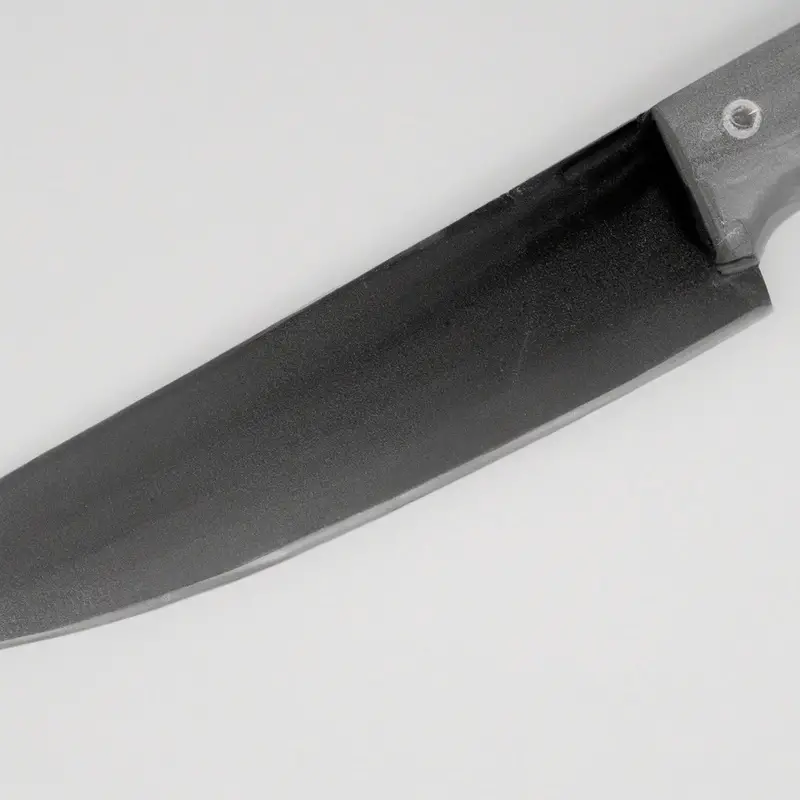
How weight distribution affects the balance point of a chef knife
Weight distribution greatly affects the balance point of a chef knife. The optimal balance point is achieved when the weight of the blade is evenly distributed from the tip to the handle.
A handle-heavy knife will make the blade feel heavier, putting more strain on the wrist and hand, and could cause fatigue during extended use.
On the other hand, a blade-heavy knife can make it feel unsteady, leading to a lack of accuracy. Different knife styles have different ideal balance points.
For instance, Japanese knives typically have a lighter blade and a handle towards the end, giving them a more forward balance.
Meanwhile, Western-style knives have a thicker and heavier blade, making them more blade-heavy. Proper weight distribution in a chef knife not only affects its balance point, but also enhances its efficiency, precision, and performance.
Therefore, it’s important to choose a knife that has a balance point that suits your personal preference and cutting style to avoid discomfort or even injury.
Balancing a chef knife for different cutting techniques
Balancing a chef knife is crucial for achieving the best cutting performance for various techniques. A well-balanced knife offers more control, less fatigue, and more precise cuts.
Different cutting techniques require a different balance point.
For example, heavy blade knives need more weight towards the handle for chopping and cutting through dense foods, while lighter knives need more weight towards the tip for delicate slicing and dicing. To balance a chef knife for different cutting techniques, you should consider the weight, length, and shape of the blade, as well as the handle design.
Different handle designs can affect the balance point and can be customized for personal comfort and use.
The blade’s length can also impact the balance point, with longer blades having a balance point further up towards the tip. It’s essential to find the right balance point based on your cutting style and comfort.
You can experiment with different knives to see what balance point works best for you and your cooking needs.
Achieving the perfect balance for your chef knife is a crucial step in enhancing your cutting experience and achieving optimal performance.
The impact of blade length on balance point
The blade length of a chef knife can significantly impact its balance point. Longer blades typically shift the balance point forward, making the knife feel heavier towards the tip.
This can provide better control and leverage for slicing through larger ingredients like meat or root vegetables.
On the other hand, shorter blades tend to have a balance point closer to the handle, making the knife easier to handle and control for more delicate cuts like mincing and dicing. Ultimately, the best blade length for a chef knife’s balance point will depend on personal preference, cutting techniques, and the user’s level of comfort and control.
Finding the right balance for your personal comfort and use
Finding the right balance for your chef knife is crucial for your personal comfort and use. The ideal balance point for your knife will depend on your specific cutting style and technique.
Different people have different preferences and comfort levels when using a chef knife, so it’s essential to experiment with the balance point to find what works best for you.
One way to do this is to hold the knife between your thumb and forefinger, about an inch or two from the blade, and see how it feels in your hand. If it feels too heavy towards the blade, the balance point is too far forward, and it may be uncomfortable to use.
Conversely, if it feels too light towards the back, the balance point may be too far back, making it difficult to control the knife.
It’s also important to consider the length of the blade when finding the right balance point for your chef knife. A longer blade can be more challenging to control if the balance point is not in the right place.
Ultimately, finding the right balance point for your chef knife is a personal process that requires some trial and error.
By experimenting with different grip styles and balance points, you can find the ideal balance point for your comfort and use, making it easier to cut and chop for extended periods without experiencing discomfort or fatigue.
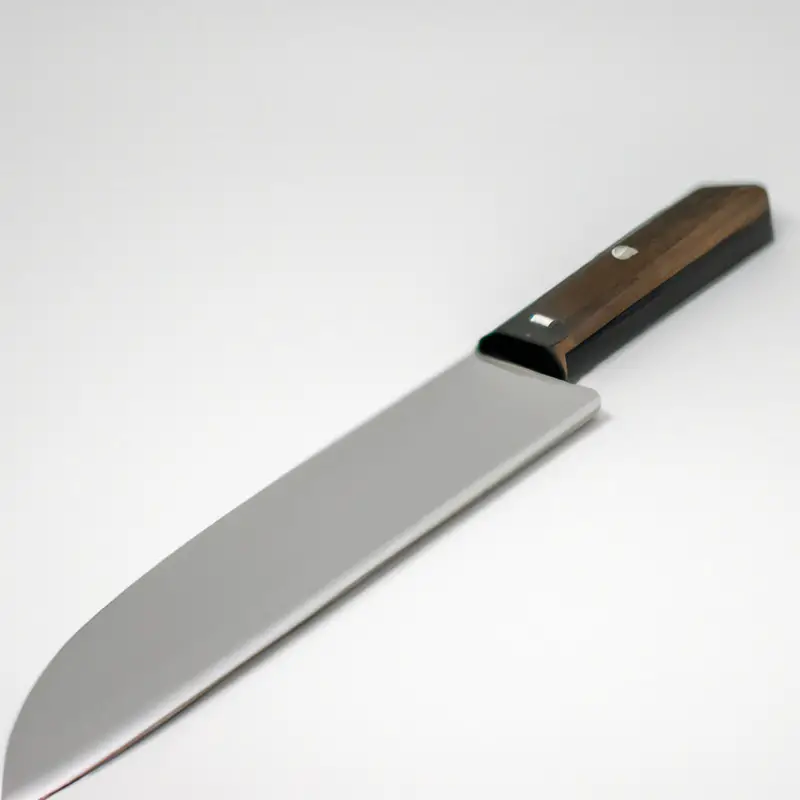
Final Verdict
Understanding the importance of balance in a chef knife is crucial to achieving precision and control in your culinary endeavors. By examining the science behind finding the perfect balance point, considering the various factors that affect it, and exploring traditional and modern techniques for balancing a knife, you can elevate your cutting skills to the next level.
Remember, the handle design, weight distribution, blade length, and personal comfort all play a role in achieving the ideal balance point for your individual needs.
By implementing the insights and practical takeaways discussed in this article, you can confidently select and balance your chef knife, knowing that you have the knowledge and expertise to enhance all of your culinary creations.

